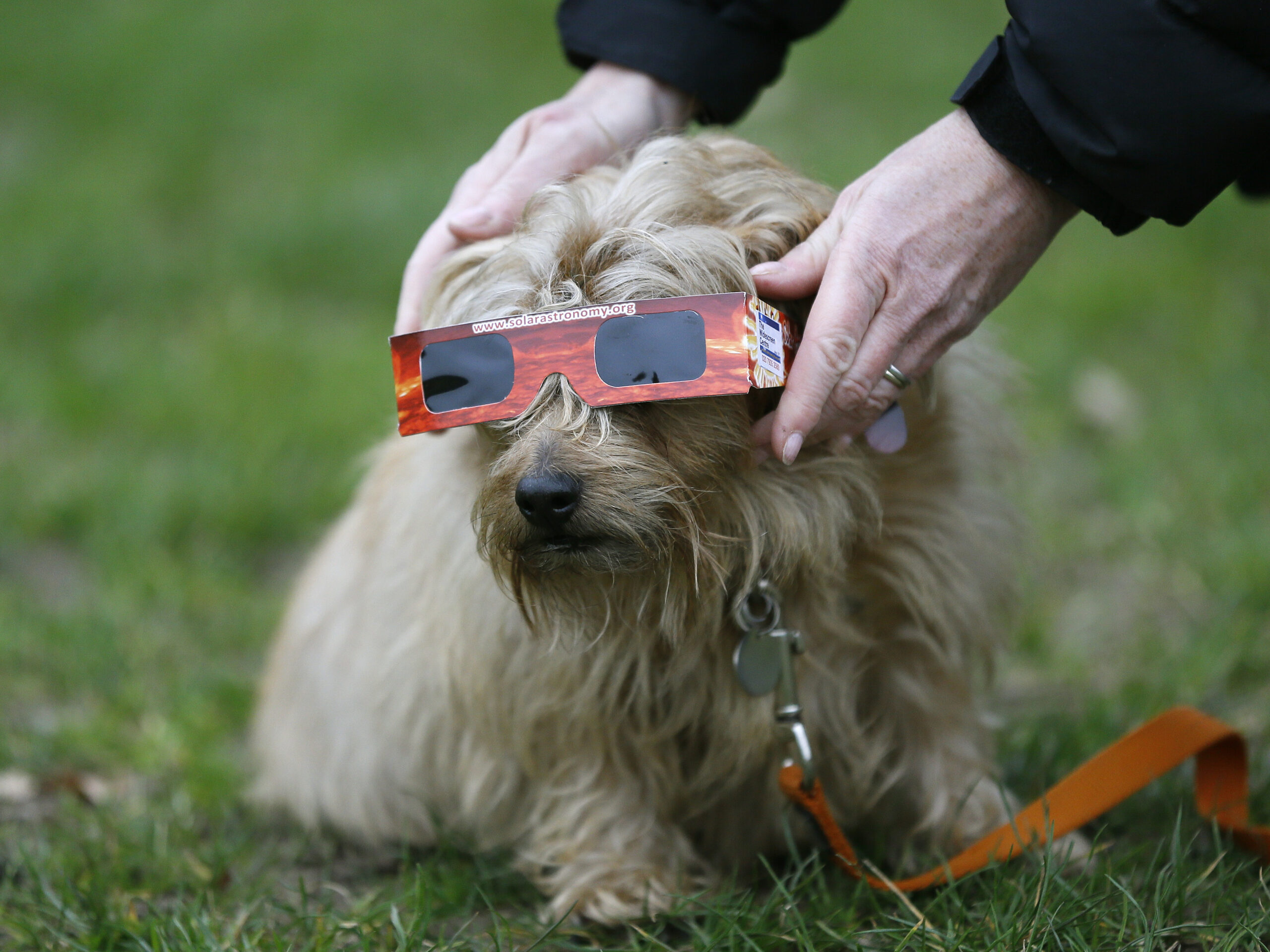Featured in this Show
-
Winter Weather, Holidays Pose Risks To Pets
Cold weather is definitely settling in over the state, as is snow. That means extra attention to keep pets safe and healthy.
Dr. Sandi Sawchuk, a professor of veterinary medicine at the University of Wisconsin-Madison School of Veterinary Medicine, shared that all pets aren’t the same when it comes to dealing with the snow and cold.
“Every pet is different,” she said. “If it’s a little Dachshund with thin hair whose belly is rubbing in the snow, that’s going to be a lot different than your Huskie or Malamute.”
She cautioned, however, that “there really isn’t any dog out there that can survive for long periods of time in sub-zero weather. So, have shelter available for your dog and make sure that you’ve done all the preventive care that you can, like getting your dog in for a checkup.”
Sawchuk also said that chronic conditions can be made worse by winter weather, too.
“Things like arthritis can really be aggravated by walking on snowy, bumpy sidewalks,” she said.
She recommended “knowing your pet’s limits, recognizing signs that they’ve had a little too much, which can include being their brains and bringing them in sooner.”
A caller who identified herself as Sue from Mequon was looking for advice on knowing how much cold her dog could stand during winter weather. Sawchuk emphasized that “it’s really going to depend on the age of the dog, the health status of the dog, like whether they are very old or very young, or if they have some underlying health issue like heart disease that’s going to impair their blood flow to body parts like ear tips and tails. (Any of) that could aggravate exposure to cold and make them get colder even faster.”
Sawchuk continued, “It’s not an easy thing to answer. I think it comes down to knowing your dog. If you’re seeing them picking up their feet, acting uncomfortable, then that’s the time to say, ‘Hey, I think we’re cutting our walk short.’”
She added that having a short route to take, and then seeing how the pet is doing after it is a good approach.
A listener who identified himself as Michael from La Crosse asked what the symptoms might be of a dog that has ingested salt used to melt snow and ice. Sawchuk replied that behaviorally, it would be licking the paws. The medical impact can be severe intestinal upset, “if a pet ingests too much salt, they can actually development some neurological toxicity.” But she added that it would take a lot of salt to get to that point.
Avoiding contact with the salt and other potential toxins like anti-freeze is the best approach. Sawchuk said that there are pet-safe formulations to melt snow and ice. She also said that bootie provide protection, assuming that a dog will tolerate wearing them. But washing the pet’s feet when they come back in is probably the cheapest and easiest solution.
Sometimes it’s just too bad outside to spend more than the bare minimum outdoors. To be sure that pets can still get exercise and stay active, Sawchuk recommended “coming up with fetch games, or find-it games, and maybe new interactive toys to keep them occupied inside.”
Whether pets go outdoors frequently or are always indoors, Sawchuk strongly recommended that the pet have identification on them or implanted on a microchip. She explained that if a pet does get out or get loose during the winter, they may seek shelter in unlikely places, or will be picked up by someone more quickly. Both scenarios can make it hard for owners to find them.
A lot of people have holiday gatherings coming up and that can impact our pets. Sawchuk shared that they’d already treated a cat at the UW Vet School who had eaten a Christmas tree light bulb. That’s a good remind, she said, that decorations like ornaments, ribbons and the like should be kept out of the reach of dogs and cats.
“Sometimes you have to decorate your house according to your pets,” she said,
Happily, one commonly held belief about a holiday risk to pets is not true. Sawchuk said that many people think that poinsettias are toxic to pets, but they aren’t. “It may cause a little oral irritation if the pet licks it or chews on it, but it is not toxic.” Other holiday plants do pose a risk, however. So Sawchuk suggested that owners familiarize themselves with the risks of specific plants before bringing them home.
There is often a lot of chocolate around for the holidays, and that is a very real risk for dogs. Sawchuk said that every dog owner should have access to a chocolate toxicity app that will help them know if their pet has ingested a dangerous amount for their size. She recommended the ChocTox app, which is available for both Android and Apple smartphones.
Sawchuk summarized pet owners’ responsibilities at this time of year as “be aware of doors being open, who’s in your house, what’s in your house, and being extra careful and watchful.”
Episode Credits
- Larry Meiller Host
- Judith Siers-Poisson Producer
- Dr Sandra Sawchuk Guest
Wisconsin Public Radio, © Copyright 2024, Board of Regents of the University of Wisconsin System and Wisconsin Educational Communications Board.

